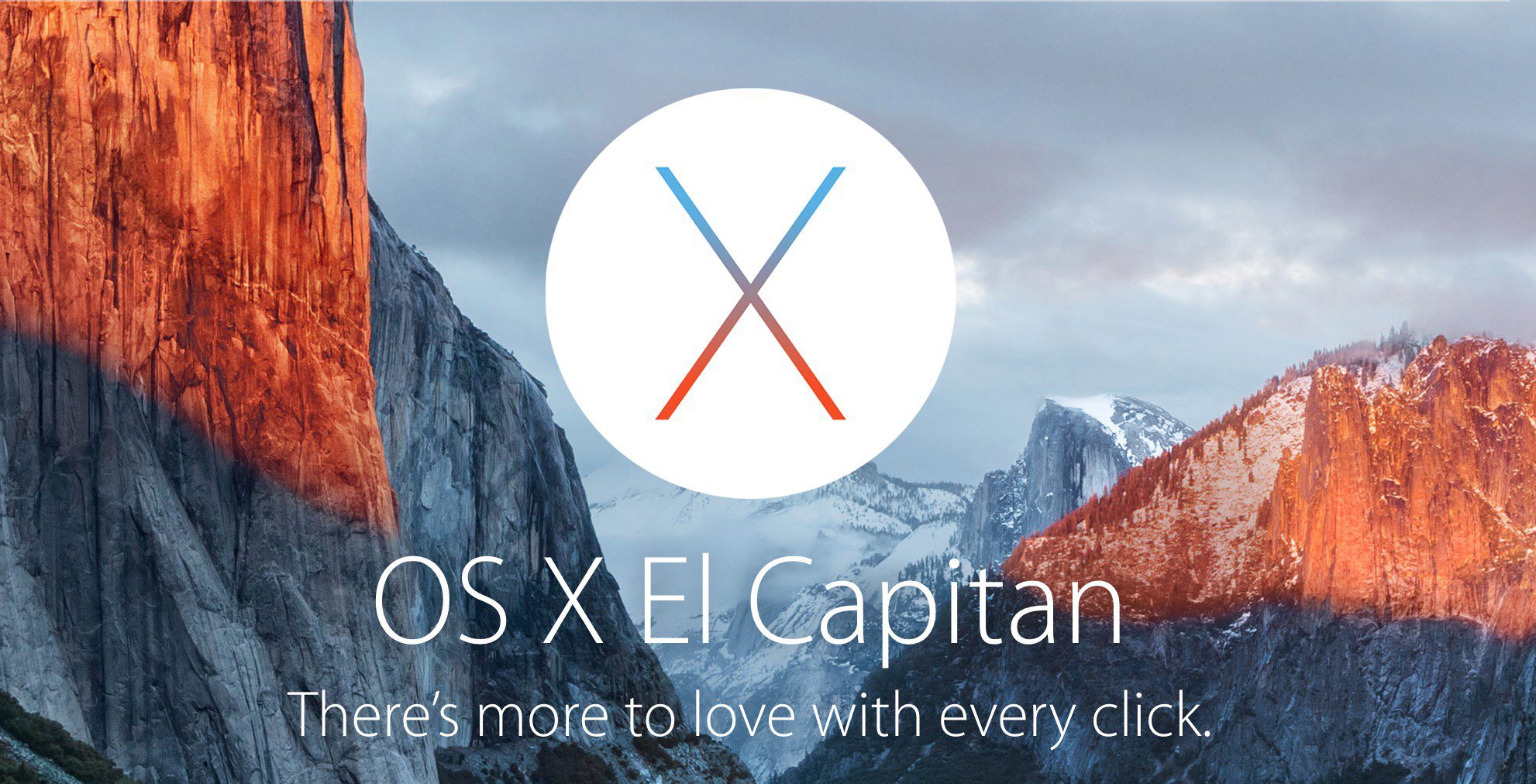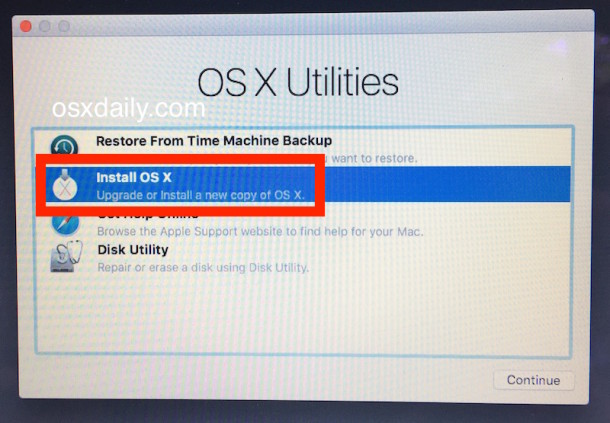I inherited a 2011 iMac from my now passed on Grandmother. It is running on Lion. I wiped the hard drive and tried to reinstall the OS through Command R but it requires the original Apple ID, no way to get that. I tried other commands when opening and the only one that opens is Command R, no Shift Option Command R. I created a USB disk with a bootable El Capitan as per this documentation. Plug-in your USB key on a turned-off computer. Start your Mac, press immediately OPTION (aka ALT) Select the Orange icon (aka a USB stick) labelled El Capitan.
Sep 30, 2015. After the successful launch of the OS X El Capitan, watchOS 2, and the iOS 9 GM seeds, Apple is now requesting that developers submit their app updates to take advantage of the new features present in its latest OS updates. You can read Apple’s bulletin via the Developer Center.
Unable To Download Os X El Capitan From App Store
On this page:
- Reinstall El Capitan on a computer alreadyrunning it
Upgrade from previous versions to OS X 10.11 (El Capitan)


- From the Apple menu, select App Store...
- When the App Store opens, search for and download El Capitan. If you don't already have an Apple ID, you'll need to create one. You can monitor the download process in the 'Purchased' section of the App Store.
- Once the download is complete, the installer should automatically open.
If it doesn't, or you don't want to complete the installation at this time, you can come back later and double-click Install OS X El Capitan in your
Applicationsfolder.Within the installer, click Continue, agree to the license agreement, and then choose the disk where you want to install El Capitan.
After you begin the installation, your computer may need to restart more than once before finishing, and then you may be asked to enter basic information. Free mac software download sites windows 10.
- From the Apple menu, select App Store.., and then install any available updates.
Download Os X El Capitan Not From App Store
Reinstall El Capitan on a computer already running it

Reinstall while keeping files, applications, and settings
- Restart your computer, and immediately hold down
command-runtil the gray Apple logo appears. - If prompted, select your main language and then click the arrow.
- Click Reinstall OS X, and then Continue. Follow the instructions on the screen, and then choose your hard disk. Click Install, and enter your Apple ID information if prompted.
- When the installation is complete, select App Store.. from the Apple menu, and install any available updates.
Reinstall while erasing everything on your computer

Reinstalling Os X El Capitan
Restart your computer, and immediately hold down
command-runtil the gray Apple logo appears.- If you see a screen asking you to select your main language, choose it, and then click the arrow.
- Click Disk Utility, and then Continue.
- In Disk Utility:
- Click your hard disk in the left column, and then click the Erase tab.
- Next to 'Format:', make sure OS X Extended (Journaled) is selected. In the 'Name:' field, give your disk a name. Click Erase.
- Once it's completed, quit Disk Utility.
- Click Reinstall OS X, and then Continue:
- Follow the instructions on the screen, and then choose your hard disk.
- Click Install. If prompted, enter your Apple ID information.
- Once the installation is complete, you'll be asked to enter basic information, and have the option to transfer data from another computer or backup.
- From the Apple menu, select App Store, and then install any available updates.
Check compatibility
Mac El Capitan Os Download
You can upgrade to OS X El Capitan from OS X Snow Leopard or later on any of the following Mac models. Your Mac also needs at least 2GB of memory and 8.8GB of available storage space.
MacBook introduced in 2009 or later, plus MacBook (13-inch, Aluminium, Late 2008)
MacBook Air introduced in late 2008 or later
MacBook Pro introduced in mid 2007 or later
Mac mini introduced in early 2009 or later
iMac introduced in mid 2007 or later
Mac Pro introduced in early 2008 or later
Xserve models introduced in early 2009
To find your Mac model, memory, storage space and macOS version, choose About This Mac from the Apple menu . If your Mac isn't compatible with OS X El Capitan, the installer will let you know.
Make a back-up
Before installing any upgrade, it’s a good idea to back up your Mac. Time Machine makes it simple, and other back-up methods are also available. Learn how to back up your Mac.
Get connected
It takes time to download and install OS X, so make sure that you have a reliable Internet connection. If you’re using a Mac notebook computer, plug it into AC power.
Download OS X El Capitan
Mac Os X El Capitan Download
For the strongest security and latest features, find out whether you can upgrade to macOS Catalina, the latest version of macOS.
Reinstalling Os X El Capitan Temporarily Unavailable
If you still need OS X El Capitan, use this link: Download OS X El Capitan. A file named InstallMacOSX.dmg will download to your Mac.
Download Os X El Capitan Without App Store
Install the macOS installer
Double-click the downloaded file to open a window showing its contents. Then double-click the file within, named InstallMacOSX.pkg.
Follow the on-screen instructions, which will guide you through the steps necessary to install.
Mac App Store El Capitan
Begin installation

After installation of the installer is complete, open the Applications folder on your Mac, then double-click the file named Install OS X El Capitan.
El Capitan App Store Link
Click Continue and follow the on-screen instructions. You may find it easiest to begin installation in the evening so that it can complete overnight, if needed.
Allow installation to complete
Please allow installation to complete without putting your Mac to sleep or closing its lid. Your Mac may restart, show a progress bar or show a blank screen several times as it installs both OS X and related updates to your Mac firmware.
Learn more
- OS X El Capitan won't install on top of a later version of macOS, but you can erase your disc first or install on another disc.
- You can use macOS Recovery to reinstall macOS.